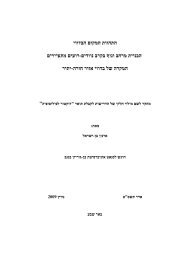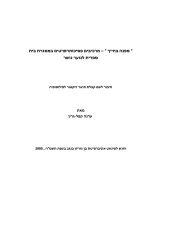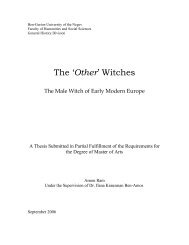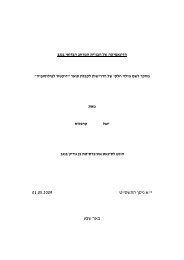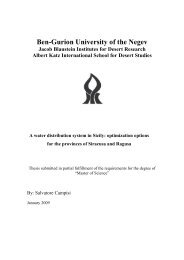CHARACTERIZATION OF DESERT DATE (Balanites aegyptiaca)
CHARACTERIZATION OF DESERT DATE (Balanites aegyptiaca)
CHARACTERIZATION OF DESERT DATE (Balanites aegyptiaca)
Create successful ePaper yourself
Turn your PDF publications into a flip-book with our unique Google optimized e-Paper software.
Table 2.1. Major HPLC-RI peaks of methanol-extracted B. <strong>aegyptiaca</strong> mesocarp, with m/z<br />
values obtained from ESI-MS.<br />
Peaks Retention Time (min) m/z a [M-H] - Amount (%) b<br />
1 4.2 1195 1.35<br />
2 4.8 1063 18.75<br />
3 6.0 1077 0.95<br />
4 7.2 1209 7.15<br />
5 8.2 1077 5.62<br />
6 9.6 1209 4.65<br />
7 11.1 1077 4.32<br />
8 12.4 1045 1.55<br />
a The m/z values cited are integers obtained by truncating (not rounding off) measured values.<br />
b Amount is calculated based on the chromatographic peak area from the injected sample.<br />
Characterization of the B. <strong>aegyptiaca</strong> mesocarp saponins by LC-ESI-MS n<br />
Characterization of the saponin peaks obtained from the LC-MS was carried out by MS n<br />
experiment in order to determine the structural pattern of each of the saponin peaks. The<br />
ESI-MS/MS in negative ion mode of saponin peaks of B. <strong>aegyptiaca</strong> fruit mesocarp<br />
obtained from the LC-RI and LC-ELS (m/z 1195, 1063, 1077, 1209, and 1045) is presented<br />
in Figure 2.3. The ESI-MS/MS spectra of the largest peak (Peak 2, m/z 1063) shows the six<br />
main fragment ions at m/z 917, 901, 755, 593, 431, and 413 (Figure 2.3b). The differences<br />
in mass between the parent ion (m/z 1063) and the fragment ions (m/z 917 and 901) are 146<br />
and 162 Da, indicating the loss of a deoxyhexose sugar and a hexose sugar unit,<br />
respectively. The competing lost sugar units suggest that there are two different terminal<br />
residues in the oligosaccharide chains, one a hexose unit (most probably glucose), the other<br />
a deoxyhexose unit (most probably rhamnose) which fits with the earlier study of saponins<br />
(Cui et al., 2000). The fragment ion at m/z 755 corresponds to loss of a disaccharide<br />
consisting of a deoxyhexose and a hexose. The ion at m/z 593 shows the loss of a hexose<br />
unit; the ion at m/z 431 shows the loss of two hexose units from the ion at m/z 755. The<br />
smallest fragment ion (m/z 413) corresponds with the further loss of one H2O unit. This, the<br />
smallest of the fragments, fits the molecular mass of dehydrated diosgenin (-H2O),<br />
indicating that this is the type of aglycone that comprises B. <strong>aegyptiaca</strong> saponin. This<br />
23





